|
Duluth, Minnesota, is the gateway to the North Shore All-American Scenic Drive, a picturesque journey along Lake Superior up to the Canadian Border with the national "All-American Road" designation. Duluth, when combined with Superior, Wisconsin, is known as Twin Ports, the largest freshwater port in the world! Over 1000 ships enter port here every year. Don't just zoom through the city on the way to the North Shore. Instead, spend a few days in town. Duluth is well worth visiting!
There is plenty to see and do in this vibrant city, but Canal Park is my #1 MUST SEE. Visit the Ship Canal to watch the ships arrive and depart each day. See the iconic Aerial Lift Bridge as it raises and lowers to let the massive commercial ships pass underneath. Check out the Canal's three lighthouses. Take a boat tour to see the working harbor and view the city on the hillside from the water.
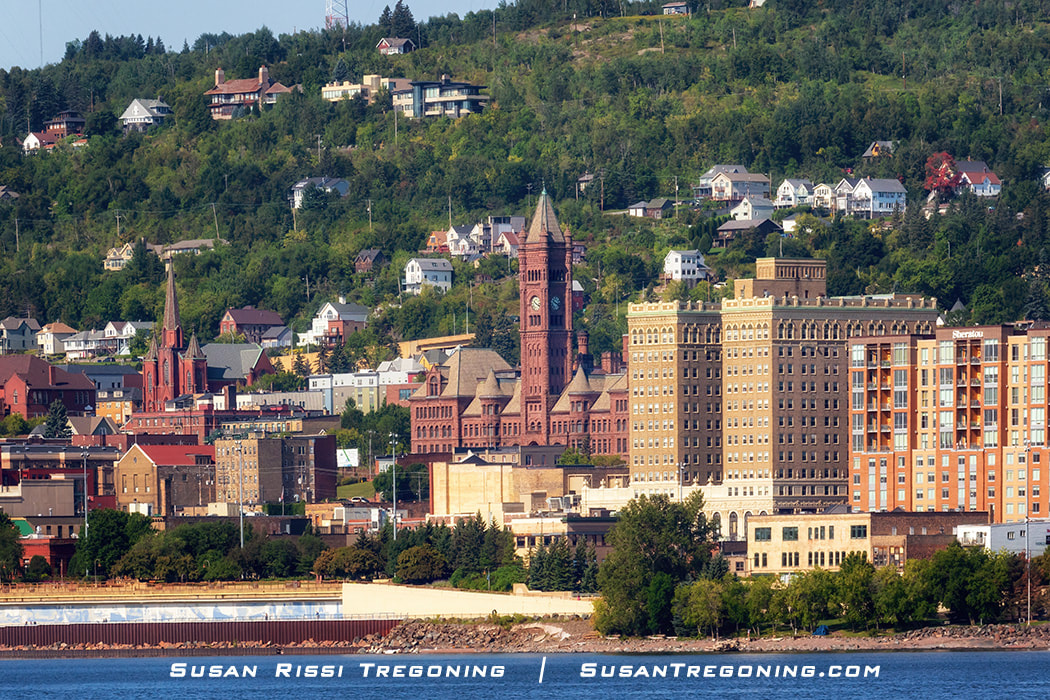
Three of Duluth’s striking architectural landmarks grace this image captured from Lake Superior.
First, the Greysolon Plaza dates to 1924. Today it's known as a wedding venue with beautiful ballrooms. However, it was once the Hotel Duluth and hosted President John F. Kennedy for a night. Second, the Historic Central High School dates from 1892 and is Richardsonian Romanesque in design. Finally, the Sacred Heart Cathedral is late Gothic Revival and was constructed 1894-1896.
The fourth-largest city in the state, Duluth, has a population of a little over 86,000 and is sometimes called the “San Francisco of the Midwest” because of its dramatic topography, proximity to Lake Superior, and its significant historical architecture. It is located in Northeastern Minnesota on the westernmost point of Lake Superior, a little over 150 miles from the Canadian Border. Large oceangoing freighters travel from the Atlantic Ocean, 2,300 miles away, through the Great Lakes Waterway and the Saint Lawrence Seaway to get to Twin Ports.
The Anishinaabe also known as Ojibwe have inhabited the Lake Superior region for more than 500 years. When the Europeans arrived, the Ojibwe became the middlemen between the French fur traders and other Native peoples—eventually becoming the dominant Indian Nation in the region after forcing out the Dakota Sioux and Fox and winning a great victory against the Iroquois. The Ojibwe name for Duluth is Onigamiinsing which translates to “at the little portage,” referring to the small and easy crossing at Minnesota Point, between Lake Superior and the western Saint Louis Bay that forms the Duluth harbor. When should you visit?
Located not far from the Canadian border, keep in mind that Spring arrives late in Duluth, it is possible sometimes to see patches of snow on the ground in late May, but once it starts warming up, Duluth is glorious! The months of June, July, and August are the warmest. Temperatures will range from the 70s to the low 80s. Autumn is beautiful; the leaves start to color up about mid-September and usually hang around until mid-October. Temps typically range in the mid-50s to low 60s in the Fall. December through February are the months to avoid visiting as temperatures are often below zero.
Be aware; it doesn't matter how nice a day it is in the city. If there is wind, it's always at least 10 degrees colder around the Ship Canal. I'm generally not cold-natured, but even in the middle of summer, I sometimes needed a light jacket or sweater, especially if I was hanging around the canal after sunset. 
The Minnesota Slip Drawbridge is seen from the water.
Heavily used by pedestrian waterfront traffic, this counter-weight balanced double drawbridge was modeled after bridges commonly found in the Netherlands. While the bridge is a relatively recent addition to Canal Park, added in 1991, it fits in perfectly with the feel of the area and has the design characteristics to make it look like it has been in place for over one hundred years. Canal Park
Canal Park was once Duluth's waterfront warehouse district. During the 1980-90s waterfront revitalization project, they converted the old warehouses into restaurants, shops, hotels, and tourist attractions. The Aerial Lift Bridge and Ship Canal are both located in Canal Park, and it is the best place to stay if you want to be within walking distance of everything.
Lake Avenue
My first image in this blog post is a photograph of Lake Avenue. Lake Avenue takes you across the Aerial Lift Bridge to Park Point. Once they raise the bridge, traffic backs up for a LONG TIME. During the shipping season, the bridge raises every 30 minutes on the hour and 1/2 hour for smaller ships and on-demand for the giant commercial freighters. About the time the traffic clears, it's time for the bridge to go up again. Trust me on this, avoid driving in on Lake Avenue unless you are crossing over to visit Minnesota Point. Instead, use Canal Park Drive when coming in and the cross streets, Buchanan and Morse to cross over to the bayside parking lots, or if it is the summer season, consider using the Port Town Trolley.
The Ship Canal
The Duluth Ship Canal is an artificial channel cut through Minnesota Point, providing direct access to Duluth Harbor from Lake Superior. A pair of 1,720 feet long breakwaters set 300 feet apart define the channel. These piers project roughly 1,150 feet beyond the shoreline. The canal passage is maintained at 245 feet wide and 28 feet LWD (Low Water Datum). LWD, which is defined as the lowest water level encountered most of the time, it allows for the safe passage of these huge ocean-going ships.
There are no locks here; most ships can transit the channel under their power. A tug service is available upon request for adverse weather conditions.
Right next to the Aerial Lift Bridge and the Ship Canal is the
Lake Superior Maritime Visitor Center and Museum. - 600 Canal Park Dr Be sure to stop in, they have an excellent museum and gift shop. The ship schedule is always up on the board and they monitor time changes. You can also check out the schedule online at ship arrivals and departures. Keep in mind, ship times are always very fluid and can change by hours and sometimes days. So don't pack too much into your day if you want to see the ships pass through. 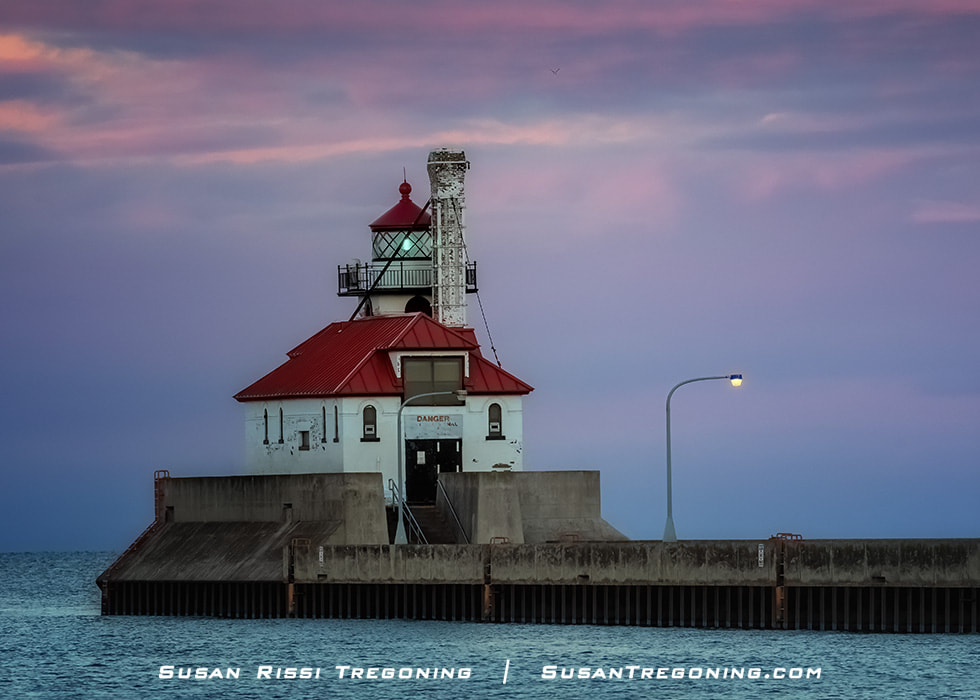
The Duluth South Breakwater Outer Light as the pinks and purples of a magnificent sunset fades from the sky.
The Outer Light is one of three lighthouses on the Ship Canal in Duluth. It was constructed in 1874 and first lit in 1901. It is characteristic of early 20th Century harbor breakwater lights built around the Great Lakes. Duluth’s Outer Light was placed on the National Register of Historic Places in 2016. 
A eye-level view of the Duluth North Pier Light with Duluth on the hillside from the tour boat as we enter the Ship Canal from Lake Superior.
The Duluth Harbor North Pier Light was listed on the National Register of Historic Places in 2016. It is a significant landmark because the lighthouse embodies and exemplifies distinctive architectural design and engineering aspects of the early twentieth century on Great Lakes harbor entry piers and breakwaters. The North Pier Light is a well-known and widely recognized St. Louis County landmark. It was put into service in 1910 and was last used in 1966. History of the Iconic Aerial Lift Bridge
The historic Aerial Lift Bridge is always picturesque, no matter what the time of day or night. It is the unofficial symbol for the city of Duluth and the western gateway to the Great Lakes - St. Laurence Seaway System. Part of Lake Avenue, the Aerial Lift Bridge spans the Ship Canal and connects Duluth to Minnesota Point, AKA Park Point.
Constructed from 1901 to 1905 by the city engineer Thomas McGilvray, the original bridge was a transporter bridge with a gondola car suspended from the top truss's bottom side. Inspired by a bridge in France, it could carry 350 people plus wagons, streetcars, and automobiles. The gondola crossed the canal every 5 minutes, taking a minute to make the crossing. It was the first of only two transporter bridges ever built in the United States; the other was an attraction at the Chicago World's Fair. By 1929, the transporter bridged no longer suited the needs of the city. So work began to convert it into a vertical lift bridge. They removed the gondola, and the top span was raised 135 feet to allow space for a two-lane elevating roadway across the canal. The bridge now works like a giant elevator, rising to enable ships to pass underneath. This significant renovation only took a year. There have been several more renovations in recent years, but they have all been sensitive to the 1929 character defining features of the Aerial Lift Bridge. The bridge was added to the National Register of Historic Places in 1973 for it's importance to Engineering as a rare bridge type on a national level.
The Pilot House, located in the middle of the bridge above the road, is the control center for bridge operations. The bridge operator raises and lowers the bridge from here. There are computers, radio, and satellite systems to monitor cars and pedestrians and communicate with the boat traffic. The bridge rises every 30 minutes on the hour and half-hour, 24 hours a day, and seven days a week during the boating season for the public. For the large freighters, it raises on demand.
The shipping season's length depends mainly on the weather, but it typically runs from late March through mid-January. The bridge must be clear and ready to start its ascent when the ships are still 1.5 miles out since commercial vessels cannot hit the brakes and wait. It takes three minutes for the roadway to rise the entire 120 feet to the top. 
The Cason J. Callaway freighter in the Duluth Harbor is seen with the Blatnik Bridge in the background.
The Cason J. Callaway is part of the Great Lakes Fleet. She was built in 1952 and has gone through several changes that allow her to continue an active life on the Great Lakes. In 1974, she was lengthened 120 feet to her current length of 767 feet. In 1981, a 262-foot boom was added to her deck converting her to a self-discharging carrier. In 2002, she had extensive rehabilitation at the Fraser Shipyard in Superior. Her steam engine was upgraded rather than replaced, and automation tools were added, moving control of the boat up to the pilot house. The Cason J. Callaway is the most advanced steam powered-boat on the Great Lakes today. Captain's Salute to the Bridge
As a ship passes through the Ship Canal, the ship captain blows his horn in salute to the Port of Duluth. The horn-blowing sequence, a long and two shorts, is then copied back by the bridge controller using two Westinghouse Airbrake locomotive horns.
The Captain's Salute is always very exciting, and it never fails to bring out the kid in me! Here's a short clip... Harbor Cameras
There are several harbor cams around Duluth Harbor, and their locations are identified on the arrivals and departures map. Click on the camera icon, and you might catch a ship in the Canal from the comfort of your own home.
While staying in The Suites in Canal Park, I learned that if I caught the bridge on the bridge cam just as it was starting to go up, I usually had time to get down to the Canal before the ship went under the bridge. I'll warn you, it was a brisk power walk, but I can't tell you how many times I did this instead of hanging around the Canal all day. Of course, the fastest route is The Suite's back door and down the Baywalk to avoid all the people. Ship Watching
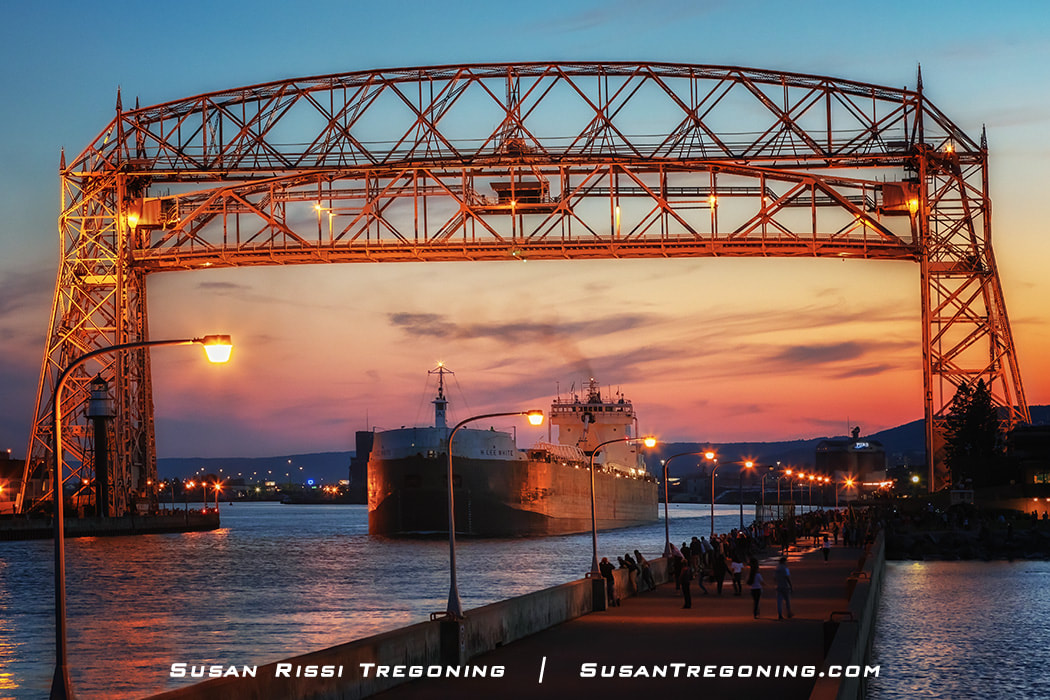
The H. Lee White leaving Duluth at sunset prepares to pass under the Aerial Lift Bridge and enter the Duluth Ship Canal.
The H. Lee White was constructed for American Steamship, and is named after a former chairperson. This diesel-powered Lake freighter made her maiden voyage in 1974. At 704 feet long and 78 feet wide, she has a carrying capacity of 35,400 Gross Tons and transports limestone, grain, coal, and iron ore. Owned by Great Lakes Fleet, she is small enough to pass through the Welland Canal. A bit of a movie star, H. Lee White, is in the opening credits of the movie, Major League. Two types of ships visit the Port of Duluth-Superior: Lakers & Salties
Lakers make up 90% of the traffic. Called "Lakers" because they are bulk carriers that are too large to fit through the St. Lawrence Sea Way, they remain on the Great Lakes. Painted predominantly black or "hull red," the iron ore's natural color, Lakers have an average lifespan of 40 to 50 years. Most Lakers are self-unloaders, having a long boom-mounted above their decks. They have a vertical bow.
The Must-See Ships are the 13 Goliath-sized American super-carriers. They range in size from 1,000 feet to 1,013 feet long and carry around 70,000 short tons. That's 140,000,000 pounds! If you hear that one of these is about to come in, drop everything and head straight to the Ship Canal! Salties are the second type of ship. They are commonly more colorful crafts painted in shades of blue, green, and red. These ships are a maximum of 740 feet long to fit through the St. Lawrence Sea Way, moving back and forth between the ocean and the Great Lakes. Due to the corrosive nature of saltwater, these ships have a shorter life span than Lakers. Built for saltwater, Salties have a deeper draft and lower buoyancy when in freshwater. They can only accept partial loads while on the Great Lakes. They usually have a series of cranes above deck and have rake bows that sharply cut away. I've only seen one Saltie... The Beatrix
The Beatrix is a General Cargo Ship built in 2009. Currently sailing for Wagenborg Shipping out of the Netherlands, she is 515 feet long and 59 feet wide.
The 13 Super-Carriers
The Stewart J. Cort may be the most well-known of the 1000 footers; she was the first super-carrier to launch in 1972. She proudly sports a #1 on her aft house to announce that honor. Cort is also the only 1,000 footer with a forward-facing pilothouse and crew accommodations. Nicknamed "Stubby," her bow and stern sections were built at Ingalls Shipbuilding in Pascagoula, Mississippi, and joined together to make the Great Lakes trip. When she reached Erie Marine, "Stubby" was cut apart and joined to a midbody there. Cort runs a regular route carrying iron ore between Superior, Wisconsin, and Burns Harbor, Indiana, so your will not see her at the Duluth Ship Canal.
Construction began on the Presque Isle for Litten Great Lakes' Wilson Transit Company, but Wilson sold her before completion. Launched in December of 1973, she is the only 1000 foot tugboat/barge combination on the Great Lakes and the most enormous tug/barge in the world. Presque Isle was designed as an integrated unit with the tug rigidly locking into a specially designed notch so that the pair could sail as one vessel. The intent was to take advantage of the U.S. Coast Guard's safe manning requirements, but since the tug was not deemed seaworthy on her own, Presque Isle must operate with a full-sized crew. She transports iron ore, coal and supports the stone trades.
The James R. Barker, built in 1976, was the third of the American super-carriers to be made and the first one to be built entirely on the Great Lakes. She is 1004 feet long, 105 feet at beam, 50 feet high, and has a 27-foot draft. She is owned and operated by Interlake Shipping Company and named after Interlake’s Chairman of the Board. The Barker restricted to the upper four Great Lakes - Superior, Michigan, Huron, and Ontario, is too large to travel through the Welland Canal. The James R. Barker is the sister ship of the Mesabi Miner.
When Interlake purchased the Paul R. Tregurtha in 1990, they renamed her in honor of the Vice Chairman of the Board. Tregurtha is Interlake's flagship. At 1013.5 feet long, she is the longest ship on the Great Lakes. The reigning "Queen of the Lakes," Tregurtha has held the title since entering service. She has an elevator and luxurious guest accommodations. Originally named the William J. DeLancey, this super-carrier was constructed in 1981 for approximately $60 million. Her 260-foot boom can empty her five cargo holds in about eight hours.
Mesabi Miner is number four out of the thirteen super-carriers. Out of Lorain, Ohio, built by American Ship Building Company for Interlake Steamship for use on the Great Lakes, she is the sister ship to James R. Barker. Constructed in 1977, she is 1004 feet long with a 105 feet beam and a 29-foot draft. In 1977, the ship was christened the Mesabi Miner by Muriel Humphrey, wife of Hubert H. Humphrey, a former senator from Minnesota and vice president of the United States. Her name honors the men and women of Minnesota’s Mesabi Iron Range. Her self-unloading system includes three cargo hold belts and a 265-foot boom; she is classified as a Self-Discharging bulk carrier.
Launched July 19, 1978, the Edwin H. Gott was the eighth super-carrier ever built. She is the fastest freighter on the Great Lakes and can reach speeds up to 16.7 mph. During a lay-up in 1995, she received a new 280 foot long self-unloading boom making it the longest boom in the Great Lakes history. Her boom is 15-30 feet longer than any other laker's booms. The ship is 1004 feet long and 105 at the beam.
Renamed the American Century in 2006 when purchased by American Steamship, this freighter was formerly known as Columbia Star in honor of the Brig Columbia, the first ship to haul iron ore through the Soo Locks in 1855. Century’s maiden voyage was in 1981. She uses the loop conveyor system in the cargo hold to transport cargo up to the boom conveyor. Primarily used as a long haul transport for iron ore pellets and western coal, her overall length is 1000 feet, and she has a 105 foot beam.
Edgar B. Speer is one of the more powerful vessels on the Great Lakes. She has a unique self-unloading system; it consists of a stern-mounted 52-foot transverse shuttle unloading boom designed for shore hopper loading only. This unloading system restricts her cargo to taconite pellets. Unfortunately, you will not see the Edgar Speer in Twin Ports, only two locations can accept her unloading boom, Gary, Indiana, and Conneaut, Ohio. Edgar B. Speer launched in May of 1980.
In 1990 the Belle River was renamed Walter J. McCarthy Jr. to honor a former Chairman of Detroit Edison. At 78,850 long tons, the McCarthy has the highest cargo capacity of the 13 1,000 footers. She was put into service in 1977 and transports low-sulfur western coal from Superior, Wisconsin, to the Detroit Edison power plants in St. Clair and Monroe, Michigan. McCarthy’s ship design is also used for the Burns Harbor, Indiana Harbor, American Spirit, and American Integrity.
American Steamship has owned the Burns Harbor since 2005. Initially owned by Bethlehem Steel, she is named for the firm's newest fully integrated steel-making complex in Burns Harbor, Indiana. She mainly long-haul transports iron ore pellets.
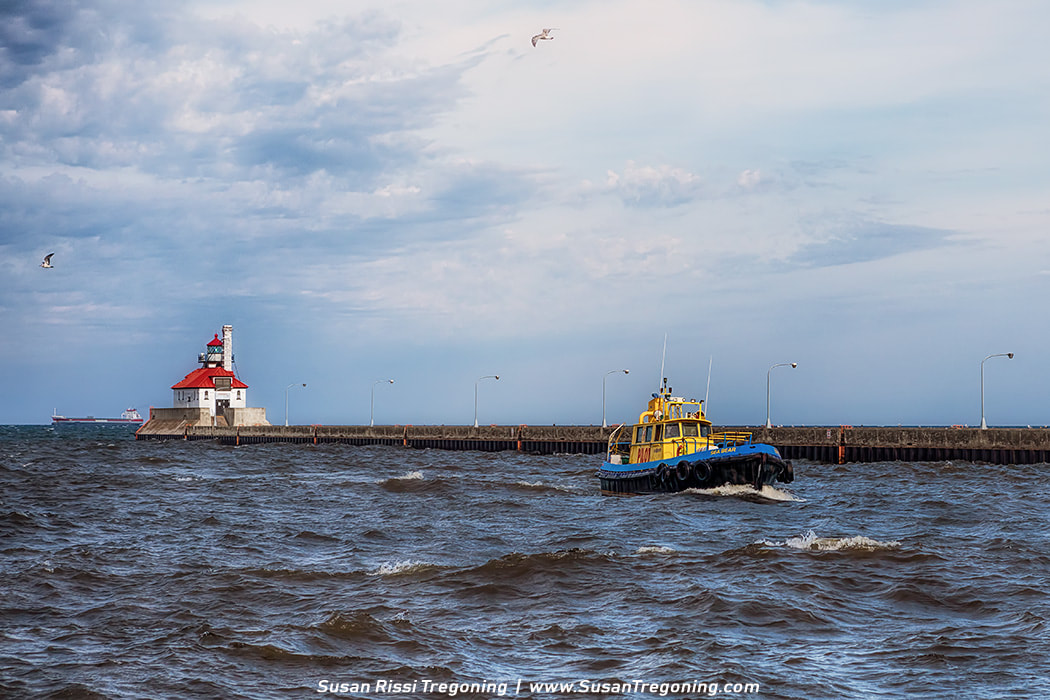
After dropping the Harbor Pilot off at the Saltie Beatrix Cargo Ship just offshore on Lake Superior, the Sea Bear Pilot Tug makes its way back through the Duluth Ship Canal.
Because of the rough seas and high winds, the Beatrix Captain wisely decided to request the Harbor Pilot be onboard for passage through the Ships Canal. A Harbor Pilot is a navigational expert for the port of call and possesses detailed knowledge of a particular waterway. The Sea Bear was built in 1959 in Massachusetts for use as a pilot boat in New York. She came to the Twin Ports in September 2002. She was made for heavy-duty and hazardous work with features such as a high bulwark for ocean seas, double spray rails, heavy-duty fendering, and reinforced framing for ice breaking. In addition, special pilot safety items such as the towable “Lifesling” recovery system, pilot overboard hoist gear, area floodlighting, DSC / GPS distress electronics, pilot harness anchor clips, and non-icing heated decks all make the pilot’s dangerous job safer.
The Indiana Harbor is the ninth 1,000-foot freighter to be built for operation on the Great Lakes and put into service in July 1979. She is one of the most capable of the 1000 footers and, since 1983, has the distinction of being the first United States flagged ship to have a satellite communications system. She was named in honor of Indiana’s Indiana Harbor. Indiana Harbor is a long-haul transport of iron ore pellets and western coal.
The American Spirit was once named the George A. Stinson. When American Steamship purchased her in 2003, they renamed her American Spirit to honor its workers and America's spirit. American Spirit entered service in 1978 and uses the loop conveyor system like the American Integrity. Her primary use is as a long-haul transport of iron ore pellets. She is 1004 feet long with a beam of 105 feet.
The American Integrity made her maiden voyage in June of 1978. She is 1000 feet long, has a beam of 105 feet and a depth of 56 feet. Since 2006, American Steamship has owned her and held her current name. She has sailed under two other names, Lewis Wilson Foy and Oglebay Norton. The Integrity has a loop conveyor system that transfers cargo to the deck-mounted boom conveyor. Her primary use is as long-haul transport of iron ore pellets and western coal.
Take a Boat Cruise
Vista Fleet Sightseeing Cruises - 323 Harbor Drive, Duluth
Vista Fleet offers Sightseeing, Dining, and Specialty Cruises. During tourist season, they do book up, so I recommend making reservations in advance. Walking directions: To find Vista Fleet, take the Baywalk across the blue Minnesota Slip drawbridge. Vista Fleet is located just west of the bridge.
The narrated Vista Fleet sightseeing cruise was fabulous. The views of the city from the water are beautiful, and I loved seeing how the Old Central High School towers over the Duluth cityscape. You can’t experience Duluth and Lake Superior the same way on land, and the harbor tour is fascinating.

Duluth’s Old Central High School was built in 1892 of locally mined sandstone. Overlooking the Duluth harbor, it dominates the cityscape towering over the city’s business district. At $460,000, it was one of the most costly public works projects of the era. It was designed by local Duluth architects who borrowed from some of the best in eclectic Richardsonian Romanesque design to give the city a school to rival even the master, Henry Richardson’s own work. It features a 230 foot clock tower that was patterned after Big Ben in London. They didn’t miss a detail, from smiling cherubs and grotesque animal figures over the cavernous entrance to the towering clock tower. It’s simply amazing!
In 1972, it ceased to be the Central High School but it is still in use by the school district. 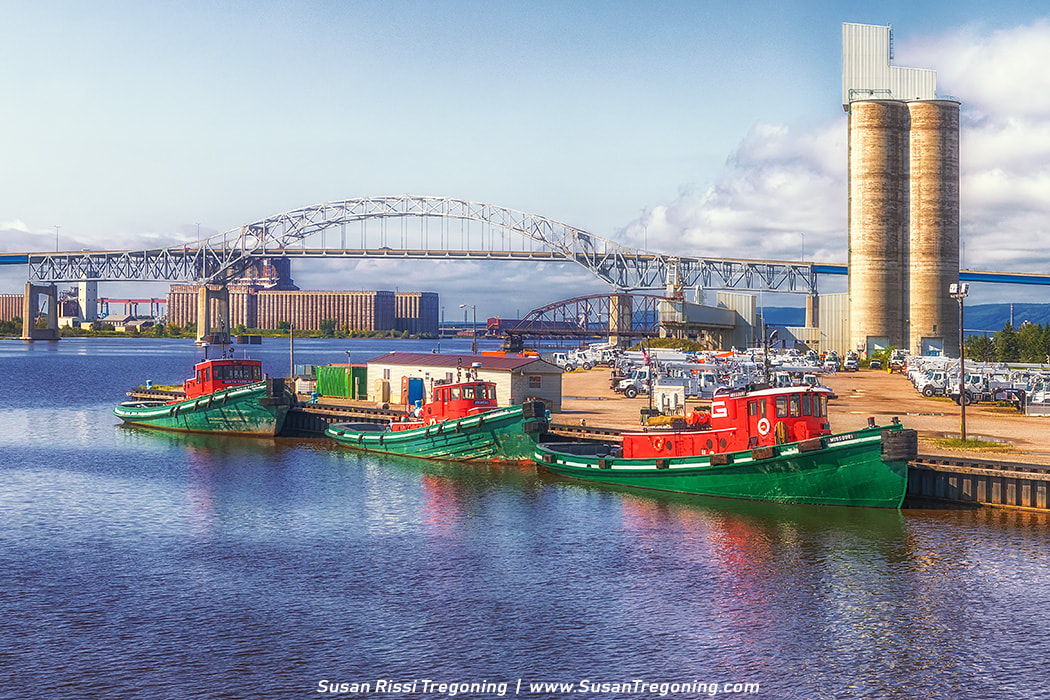
Great Lakes Towing Company's tug boats, the North Carolina, Arkansas, and Missouri, are moored at Rice Point with the John A. Blatnik Bridge in the background.
Rice Point separates Duluth-Superior's outer from its inner harbor and is a focal point of Duluth's industrial activity. In addition, the Blatnik Bridge connects Duluth, Minnesota, with Superior, Wisconsin. 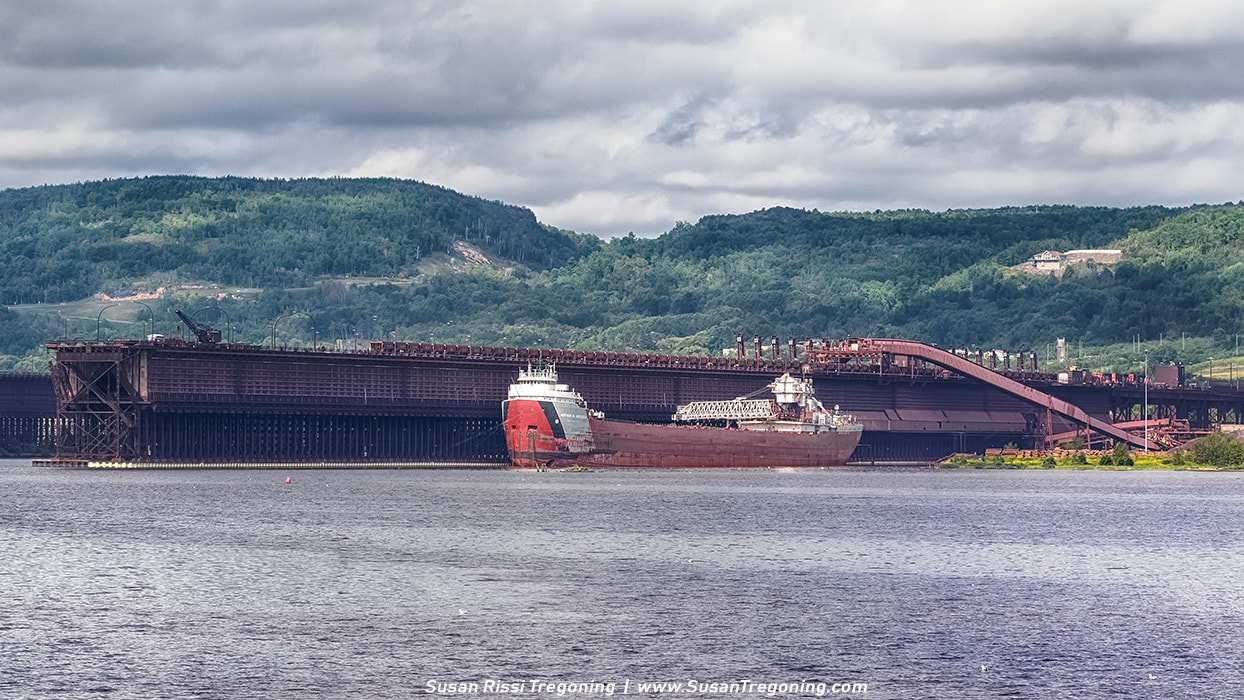
The SS Arthur M. Anderson, a 767 foot long Laker, alongside an ore dock where she was put on long term lay up for maintence at the end of the 2017 shipping season. Anderson was back into service by the 2019 shipping season.
The Arthur M. Anderson’s most notable claim to fame, she was the last ship to be in contact with the SS Edmund Fitzgerald before the Fitzgerald sank on November 10, 1975. Anderson was also the first rescue ship on the scene to search in vain for survivors. William A. Irvin Ship Museum
Everything you need to know about tickets and time is on the website here.
Drop me a note and let me know how the tour was. 
Moving the William A. Irvin out of the Minnesota Slip was no simple feat. This historical ship museum was placed in this spot in 1986 before the bridge was built, and she had never passed through the Minnesota Slip Bridge. The bridge is only 14 inches wider than the ship. She had to be moved with two winches, one to pull and one to brake, at the rate of 1 foot every 4 seconds. Watching them move the Irvin was so fascinating and at the same time a little like watching paint dry. LOL
Side Trips

It's easy to see why the cities of Duluth and Superior are called Twin Ports in this image.
Shot from Wisconsin Point beach, that’s the Wisconsin Point Lighthouse in the foreground. The opening where the ships pass through into Superior’s Harbor is just on the other side of the lighthouse. Look to the left of the Superior Lighthouse and you'll see the Duluth Lift Bridge. To the far right of the image, the lighthouses at the opening of the Duluth Ship Canal look tiny.
The Port of Duluth-Superior is comprised of Duluth, Minnesota, and Superior, Wisconsin and it is often called Twin Ports. There is a nine-mile natural breakwater called the Minnesota Point, on the Duluth side, and Wisconsin Point on the Superior side, which shelters the bay's working waterfront. This is the westernmost tip of Lake Superior and the Great Lakes - St. Lawrence Seaway system. At 2,342 miles from the Atlantic Ocean, it's the Great Lakes' cargo capital and North America's farthest-inland freshwater seaport.
A visit to Wisconsin Point is a fun side trip if you have the time. I love the views of Duluth from the Wisconsin Point beach! See my blog posts about other great side trips that aren't far from Duluth... Seven Bridges Road right in Duluth Amnicon Falls State Park just 15 miles east of Superior, Wisconsin
Susan's photography is available for purchase as fine art prints and wall art in various sizes and many different print substrates. It is also available on home decor, gift items, and apparel in her Photo Gallery.
Check out the Minnesota Collection for more images of Duluth and the surrounding area.
snapshots that evolved into a desire to capture every location and object as art. By meshing her two loves, photography and design, she has come full circle.
0 Comments
Your comment will be posted after it is approved.
Leave a Reply. |
AuthorI am the 8th photographer in 4 generations of my family. Back in 2006, my husband accepted a job traveling, and I jumped at the chance to go with him. Categories
All
Archives
June 2024
This website uses marketing and tracking technologies. Opting out of this will opt you out of all cookies, except for those needed to run the website. Note that some products may not work as well without tracking cookies. Opt Out of Cookies |
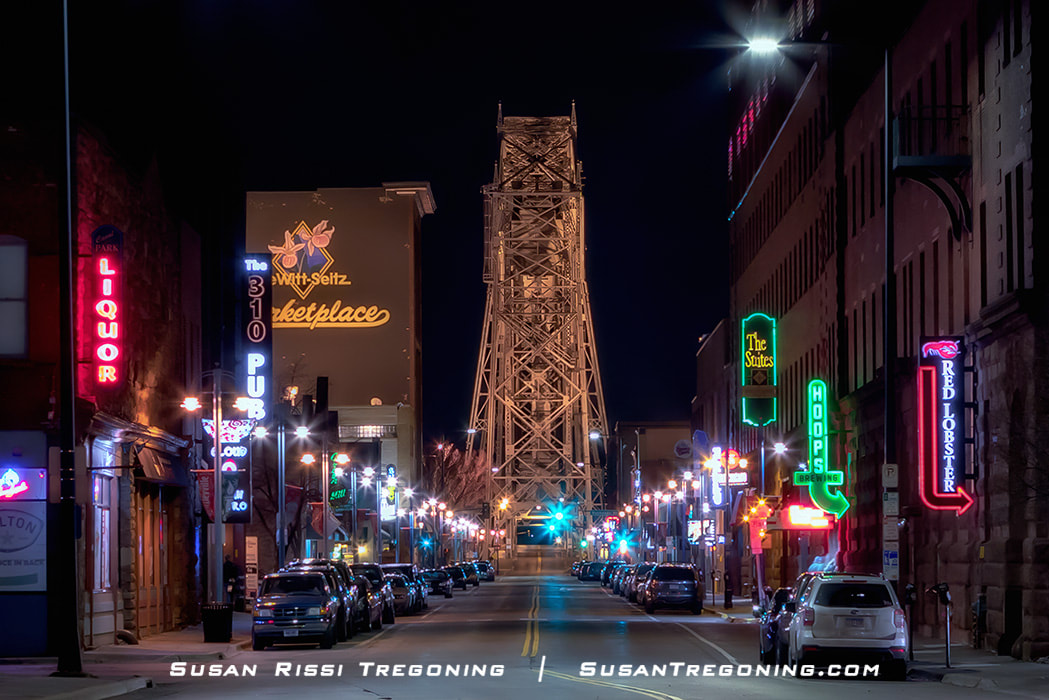

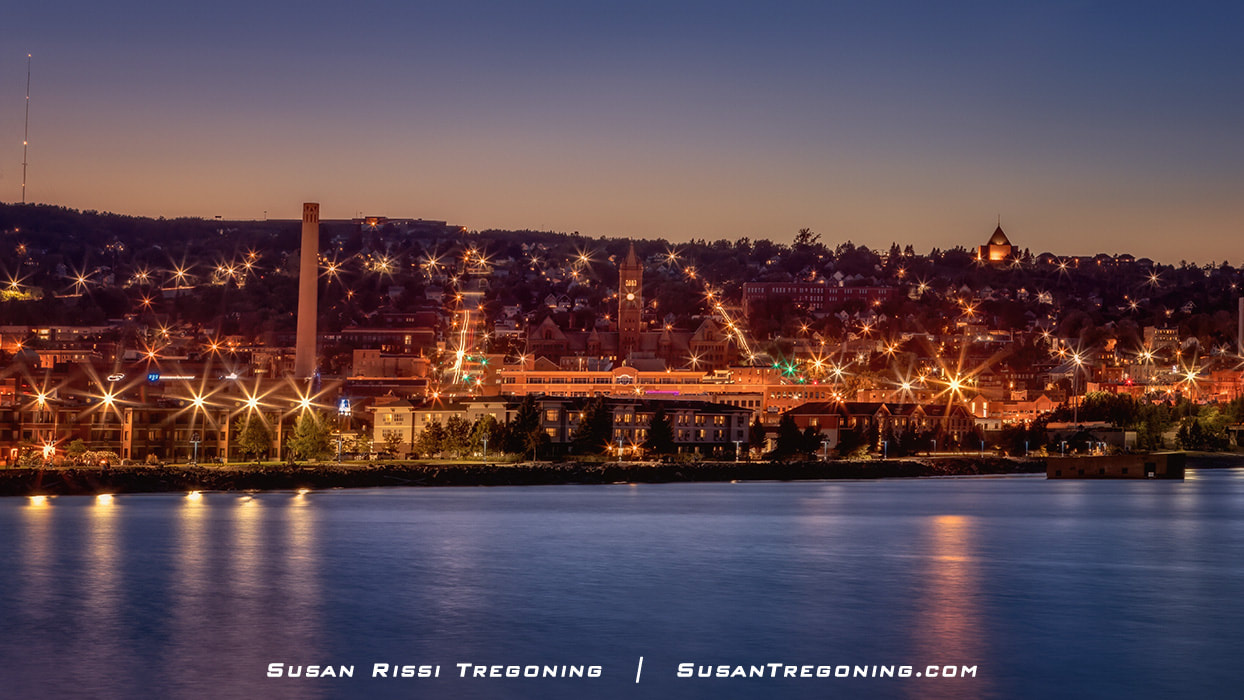
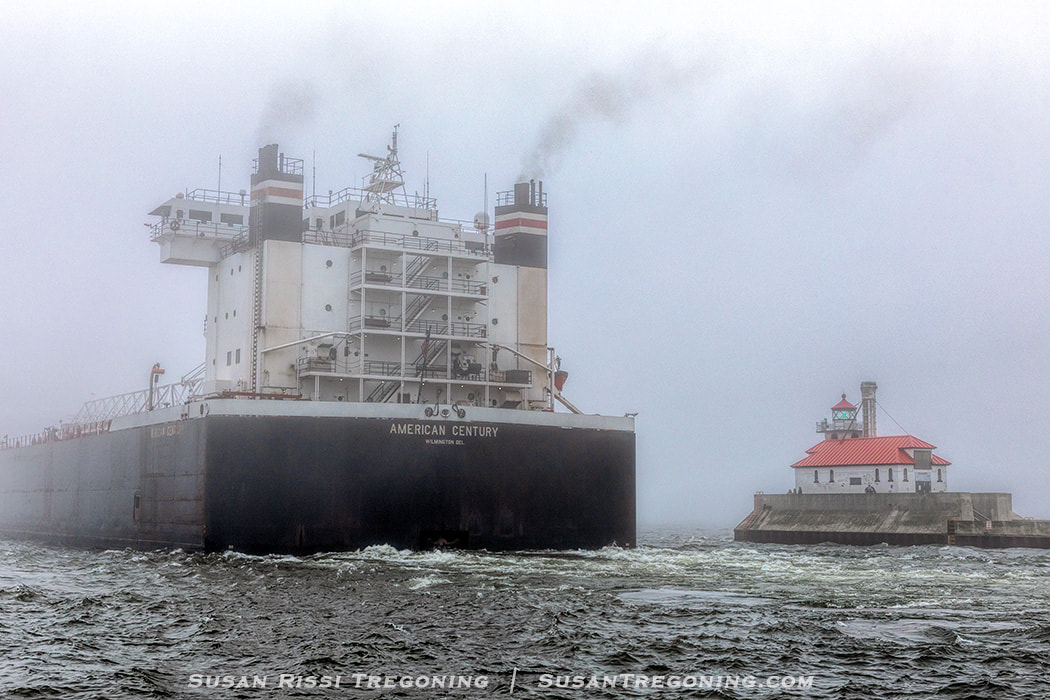



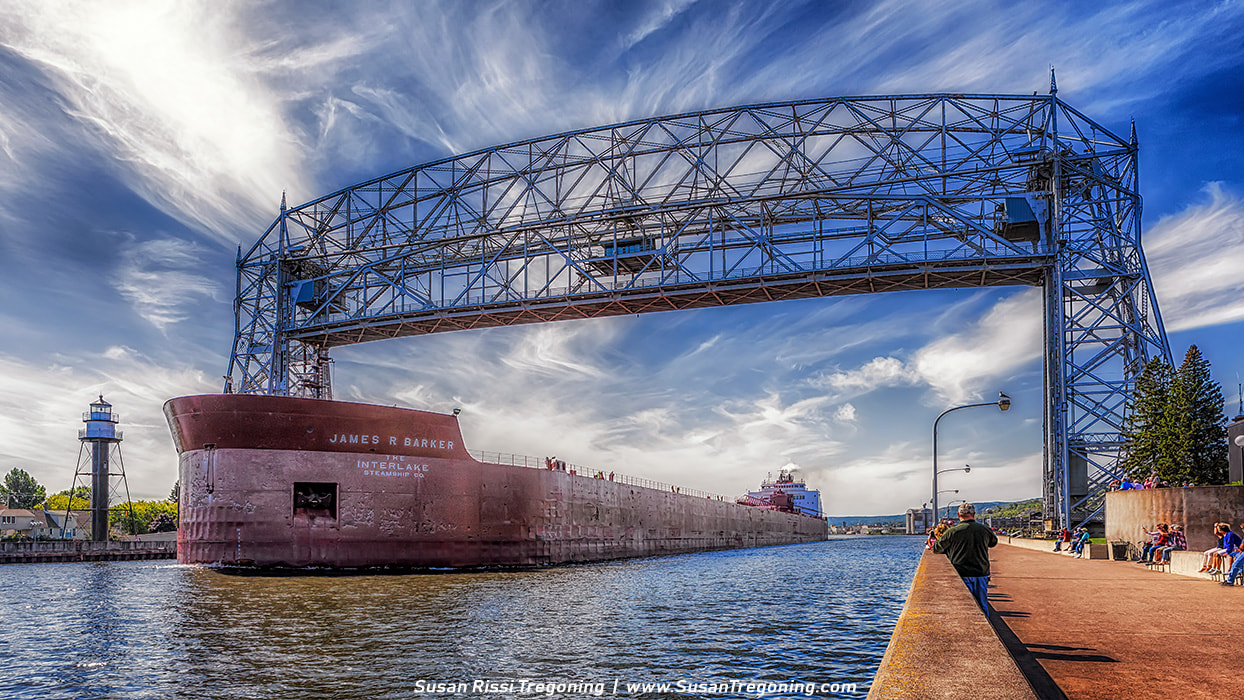
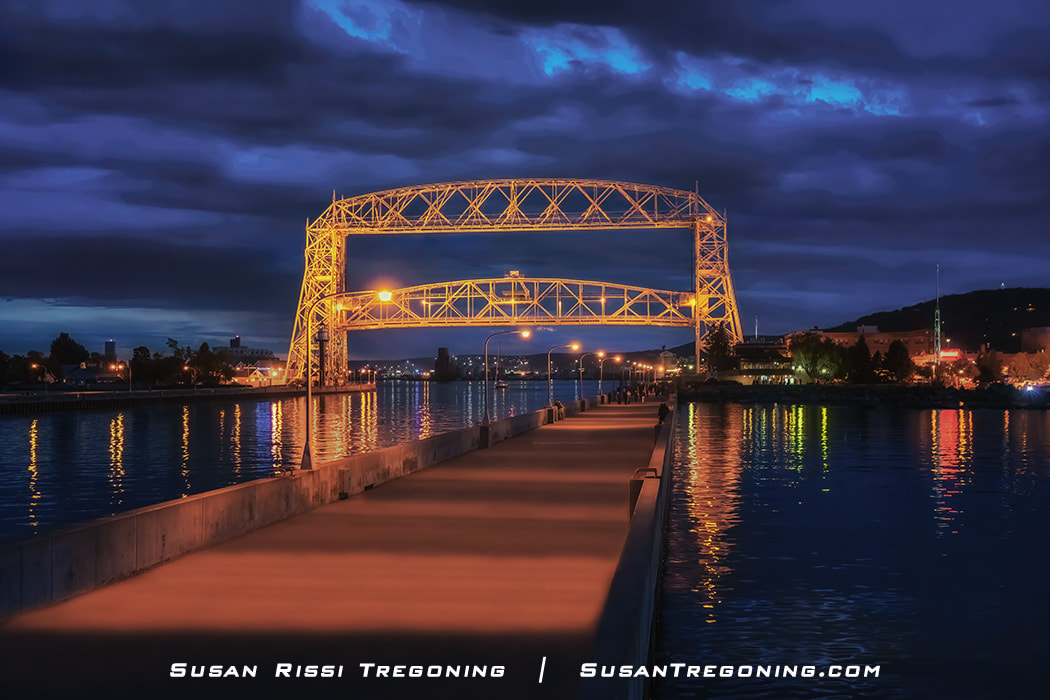

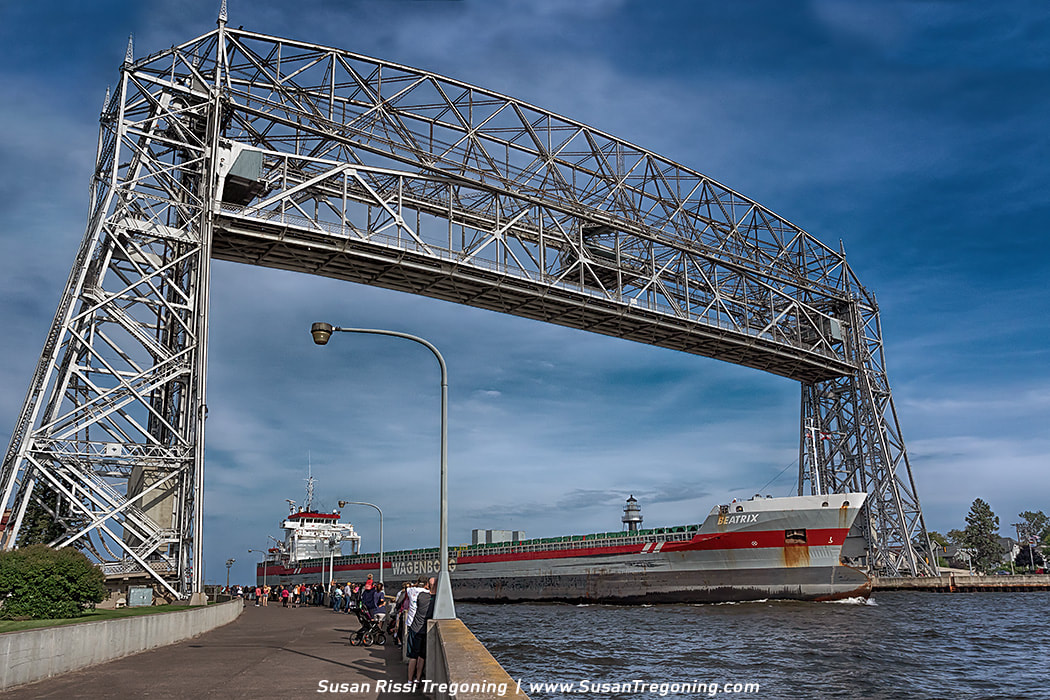



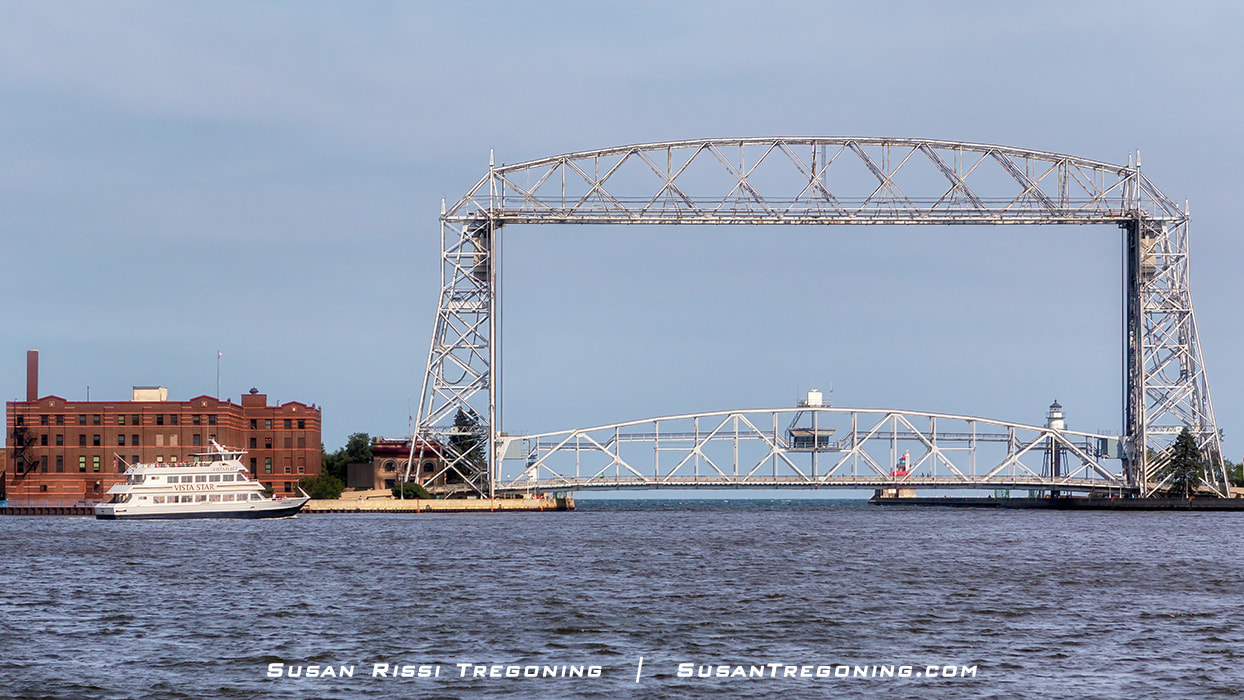

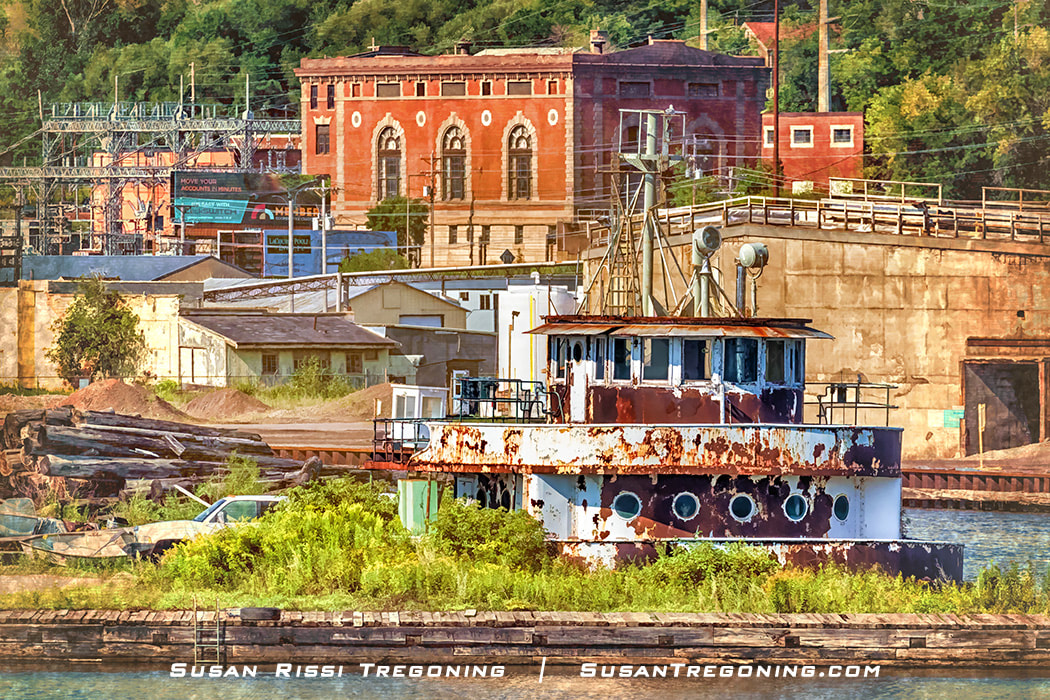

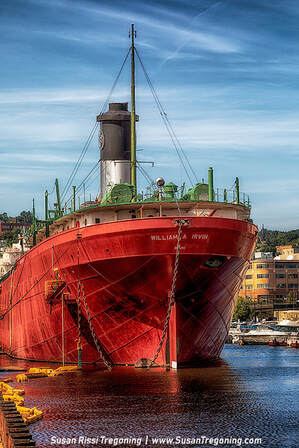



 RSS Feed
RSS Feed